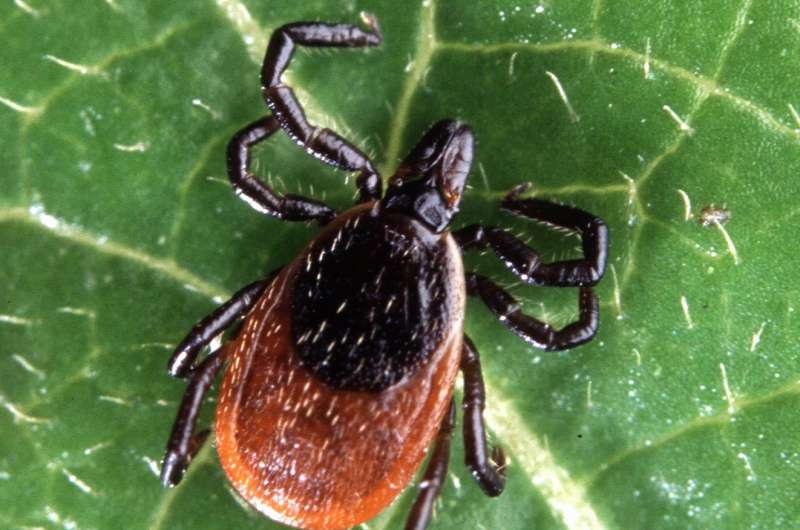Study identifies characteristics of Lyme disease hospital patients in England and Wales

Patients with Lyme disease in England and Wales hospitals appear to be predominantly white, female and living in areas of low deprivation, according to a study published in the open access journal BMC Public Health. The study, which examined data on 2,361 hospital patients collected between 1998 and 2015, also found an increase in Lyme disease incidence over time, with the number of new cases peaking in August each year and higher rates in central southern and western England. The findings may inform and help target health promotion messages.
Dr. John Tulloch, NIHR Health Protection Research Unit in Emerging and Zoonotic Infections, the corresponding author said: "In the United Kingdom information relating to infected Lyme disease patients' characteristics, where they live and how they are managed within the National Health Service (NHS) is not fully understood. Through our analysis of NHS hospital data we were able to identify demographic information about Lyme disease patients accessing hospitals for management and treatment and, for the first time, start to describe how they progress through the healthcare system."
The authors identified 2,259 Lyme disease patients within anonymised health records in England and 102 patients within records in Wales, respectively. Out of all identified cases, 1,005 (60.1%) were women or girls, with peaks of new cases at the ages between six and ten, and 61 and 65 years. Out of the 1,877 patients for whom ethnicity information was recorded 1,803 (96%) self-identified as white.
John Tulloch said: "These data display a predominance of female cases of certain age groups, most of whom identify as white. The reasons for this are hard to explain, but could be related to differences in health seeking behaviour between women and men and an increased exposure to tick habitats due to leisure activities in children and older people, as opposed to occupational exposure in younger adults. The apparent association between ethnicity and Lyme disease is most likely due to sociocultural and behavioural reasons, for example living in areas that are more likely to see a higher abundance of disease-transmitting ticks."
Analysing the data over time, the authors found that the number of new cases rose from 0.08 per 100,000 people in 1998 to 0.53 cases per 100,000 people in 2015. The exact cause for the increase in Lyme disease incidence remains unclear, but may be the result of various factors, such as increased awareness by the public and/or hospital clinicians, increase in referrals by clinicians in primary care, or a true increase in incidence within England and Wales, according to the authors.
Based on the geographical information that was included in the health records, the authors showed that the highest number of Lyme disease cases were located in the south west of England. The local authorities with the highest number of cases were Purbeck with 3.13 cases per 100,000 people per year, New Forest (2.58 cases), and East Dorset (2.32 cases). Lyme disease patients were more likely to live in rural rather than urban areas.
John Tulloch said: "Almost all parts of England and Wales reported Lyme disease cases attending hospitals with clear hotspots of disease in central southern England. This highlights that while Lyme disease poses a risk across both countries, for the majority of people the risk is likely to be very low."
The authors also found that 30% of Lyme disease hospital admissions in England and 67.6% in Wales originated from the A&E department. The findings suggest a poor understanding of the recommended care pathways for symptoms related to Lyme disease by the general population.
John Tulloch said: "It would be unlikely that the numbers of patients admitted in our study have acute/severe presentations of disease that require immediate hospital attendance. Further work is needed to explore why so many patients would seek treatment at a hospital when, for the majority of cases, management could occur at primary care level."
He added: "Being aware of the signs and symptoms of Lyme disease is important so that patients can receive early diagnosis and treatment from their family doctor. Symptoms typically develop up to three weeks after being bitten by a tick and include a spreading circular red rash or flu-like symptoms. When patients visit their GP or call NHS 111, it is important to tell them where patients have been and if they remember being bitten."
More information: John S. P. Tulloch et al. Characteristics and patient pathways of Lyme disease patients: a retrospective analysis of hospital episode data in England and Wales (1998–2015), BMC Public Health (2019). DOI: 10.1186/s12889-019-7245-8

















